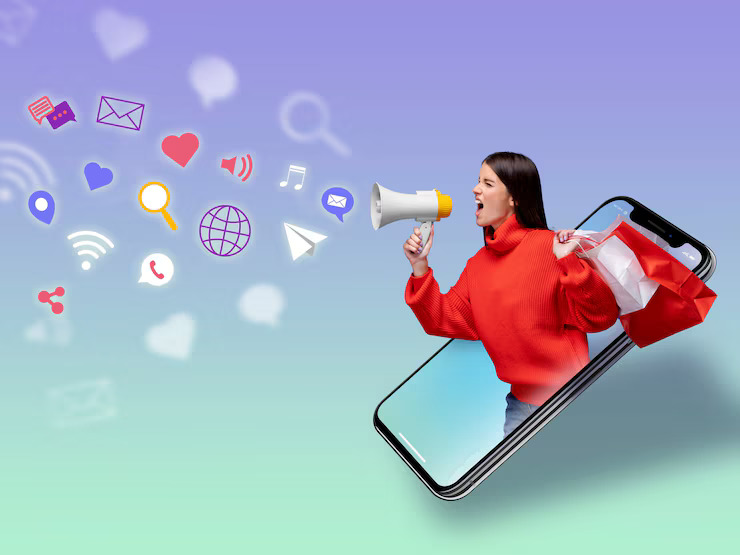Business-to-consumer (B2C) brands are altering their marketing strategies in the rapidly changing digital environment by integrating influencers into their teams. Brands looking to improve authenticity, engagement, and long-term success are realising that this new trend is transforming the industry.
Why In-House Influencers?
Traditional advertisements, though far-reaching, often lack the personal touch and relatability that today’s consumers wish for. On the other hand, with authentic, captivating material, influencers, particularly those with niche audiences, have a major impact on consumer choices. B2C brands benefit from both cost-effective, high-performing content and trusted advocacy by hiring these creators as in-house marketers.
Through community involvement, product recommendations, and consistent messaging, in-house influencers serve as brand advocates and build trust. They contribute to making the brand more relatable and creating deep connections with customers, both of which are essential for increasing conversions and retaining customers.
A major factor driving the in-house influencer trend is the growth of user-generated content (UGC). In terms of trust and engagement, user-generated content (UGC), which is frequently created by customers or influencers, performs better than polished brand shots. When content feels genuine, relatable, and real, consumers are more inclined to engage with it.
B2C brands that use user-generated content (UGC) see improvements in website performance and conversion rates in addition to higher engagement. By reducing the need for professional production teams, user-generated content (UGC) increases customer loyalty, strengthens online communities, and saves money.
Influencer-Created Content vs Traditional Advertising
The authenticity and customised messaging of influencer-generated content make it appealing to viewers. It is perceived as more genuine than traditional ads and often leads to higher engagement and conversion rates. Influencers are also more adept at connecting with specific audience segments, making their content highly targeted.
On the other hand, traditional advertising tends to be broad, expensive, and less effective in building trust. Although it still has a role in marketing strategies, influencer content is more appealing because it is more individualised and community-driven.
Strategic Benefits of In-House Influencers
The integration of influencers into B2C brands offers multiple strategic advantages-
- Cost-Effectiveness: Hiring influencers in-house eliminates the high costs associated with external partnerships, including agency fees, ad spend, and production expenses.
- Content Flexibility and Scale: In-house teams can quickly scale content production, especially during peak seasons, without relying on third parties.
- Brand Alignment: Internal influencers have a deeper understanding of the brand’s mission, tone, and goals, resulting in more consistent and aligned messaging.
- Customer Insights: Influencers often engage directly with audiences and can gather valuable feedback and emerging trends, which can inform product development and marketing strategy.
To increase trust, a lot of brands are even leveraging employee influencers, or team members who have a social media following. These insiders contribute to the development of communities and provide real-time insights and product feedback. Moreover, content creation has been made easier by AI-powered tools, but scaling powerful, customised content still calls for human intervention. While there are short-term cost savings and flexibility in outsourcing content development, in-house teams offer longer-term consistency and more control.
B2C brands can maintain their agility while maintaining brand integrity by combining in-house influencer marketing with occasional outsourcing and strategic use of AI. Furthermore, a number of B2C companies have effectively adopted in-house or long-term influencer partnerships to improve engagement and increase awareness.
For example, Nike works with athletes who tell engaging brand stories, and Sephora uses product reviews and makeup tutorials from influencers and beauty enthusiasts to boost authenticity. Adidas leverages celebrity partnerships to increase sales and stay relevant, while Gymshark has developed a flourishing online fitness community through its influencer ambassadors. Glossier successfully connects with millennials through beauty bloggers and real, accessible storytelling, while Fenty Beauty succeeds by fusing influencer marketing with a strong dedication to diversity.
Incorporating influencers into in-house marketing teams is not just a trend; it’s a strategic move towards more authentic, community-driven, and results-oriented growth. As B2C brands keep exploring the competitive digital space, in-house influencers will be essential in building trust, increasing sales, and establishing lasting connections with customers.
For a deeper dive into the broader market dynamics, including current trends and challenges facing influencer marketing platforms, check out this detailed LinkedIn article on market trends and restraints.



